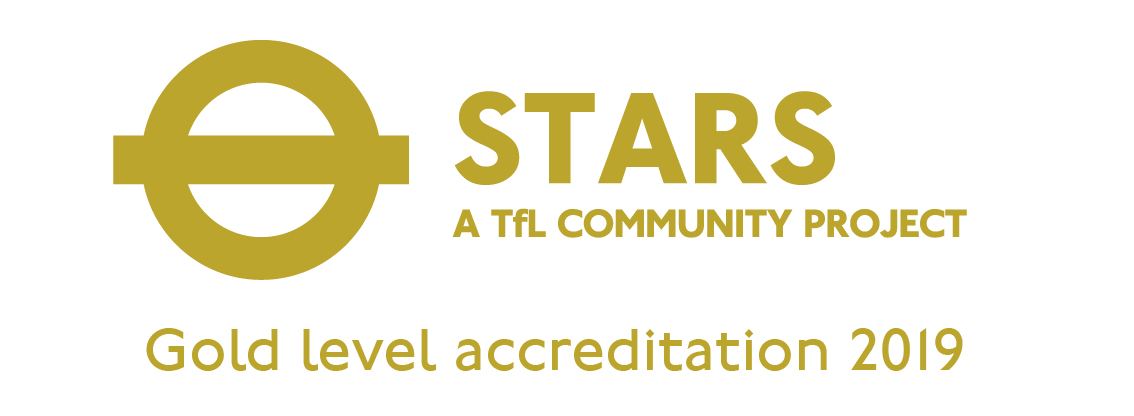ADMISSION POLICY - SEPTEMBER 2020
Admissions
| Admission Limit | 60 |
| Age range | 4 - 11 |
| Head Teacher | Mr C Tofallis |
| Breakfast Club | Yes |
| After-school Club | Yes |
| Nursery Class | No |
Click here to access the Barnet Primary Schools Admissions Information page
INTRODUCTION
Ashmole Primary School (“the School”) is a primary free school located in the London Borough of Barnet which is part of Ashmole Academy Trust Ltd, a multi academy trust (“the Trust”) which also runs Ashmole Academy, a secondary academy, on the same site as the School. The Trust is the “admission authority” for the School and therefore responsible for determining and implementing the admission arrangements for the School each year in accordance with the School Admissions Code 2014 (“the Code”) and other legislation. The Trust delegates this responsibility to the Local Governing Body of the School (“the Governing Body”).
EQUALITY AND INCLUSION
The School is fully inclusive and welcomes applications for the admission of children of all abilities and needs, including those with special educational needs and disabilities. The School fully complies with its responsibilities under the Equality Act 2010.
CHILDREN WITH AN EDUCATION HEALTH AND CARE PLAN
There are separate statutory procedures in place which govern the admission of children with special educational needs (“SEN”) for whom an education health and care plan (“EHC plan”) has been issued by their Local Authority. This means that the parents of children who have an EHC plan, or are being assessed for an EHC plan, should not apply for admission to the School under this Admission Policy. If parents have a preference for a particular school, they need to make their home Local Authority aware of this so that this is taken into account by the Local Authority in deciding which school is suitable for the child’s age, ability, aptitude and special educational needs in consultation with the parents.
Where a child has an EHC plan naming the School as the educational provider, the child will be admitted to the School even where this will result in the published admission number (“PAN”) for that year group, or the statutory maximum infant class size, being exceeded. Where admission is to Reception Year in September (i.e. in the normal admission round), the number of places available within the PAN for other children will be reduced.
AGE ON ADMISSION TO RECEPTION YEAR
All children are entitled to a full-time place in Reception Year at a primary school from the September following their fourth birthday. Children do not, however, reach compulsory school age until the first of three prescribed dates after their fifth birthday. These prescribed dates are 31 December, 31 March and 31 August.
For example, a child who will reach the age of five years on 18 November will not reach compulsory school age until the following 1 January, a child who will reach the age of five years on 22 March will not reach compulsory school age until the following 1 April and a child who will reach the age of five years on 3 June will not reach compulsory school age until the following 31 August.
DEFERRED ENTRY AND PART-TIME ATTENDANCE
Parents who have achieved a place for their child in Reception Year at the School can then choose to defer their child’s start date until they have reached compulsory school age (i.e. on one of the three prescribed dates stated above) and still retain their child’s place in Reception Year at the School.
However, the start date for a child born between 1 April and 31 August who will not reach compulsory school age until 31 August (known as a “summer born child”) cannot be deferred later than the first day of the last term (usually when the School reopens after Easter) without losing the place achieved, which will then be allocated to another child. Parents of “summer born children” can, however, choose to delay their child starting school for a whole school year (see below for further details).
Parents may also choose to send their child to school part-time until they reach compulsory school age (i.e. on one of the three prescribed dates stated above). Unlike the right to defer entry, this right can be exercised during the last term in the case of “summer born children”, and can also be exercised in combination with the right to defer the child’s start date until later in the school year, as set out above.
For example, a child born on 18 November could start school part-time from 1 September and then full-time from 1 January, and a child born on 22 March could start school part-time from either 1 September or 1 January and then full-time from 1 April.
DELAYED ENTRY FOR “SUMMER BORN CHILDREN”
Parents of children born between 1 April and 31 August (known as “summer born children”) have the following options in relation to their child:
- To start school full-time in Reception Year in the September following their fourth birthday in the usual way; or
- To retain the place they have achieved for their child in Reception Year and decide that their child will start school later in the school year (i.e. deferred entry) and/or attend part-time, as set out above; or
- To lose any place achieved for their child in Reception Year and delay (rather than defer) their child starting school for one whole school year (i.e. until the following September).
Parents choosing to exercise the third option must then decide whether they want their child to be admitted to Year 1 in the following September with their usual age group (subject to there being an available place in Year 1, as no place will be have been reserved for the child) or be admitted to Reception Year in the following September with children below their normal age group. The second of these options requires the parent to submit a separate Application for Admission Outside Normal Age Group to the Governing Body of the School, as set out below.
APPLICATIONS FOR ADMISSION OUTSIDE NORMAL AGE GROUP
All parents have a right to apply for their child to be admitted to a year group above or below their child’s normal year group, however it is for the admission authority for each school to decide whether to agree to this or not. Parents do not have an absolute right to decide that their child will be educated outside their normal age group.
In order to apply, parents must complete a separate application form (called an Application for Admission Outside Normal Age Group form, which is available for download via the School’s website or in hard copy from the School’s office) and submit it to the Governing Body of the School with any supporting documentation. Applications should be submitted as early as possible so that all options are kept open before deadlines pass, as an application for admission will also have to be made at some stage.
On receipt of a completed application form and any supporting documentation, the Governing Body will need to decide whether to agree or refuse the application. This decision will be made on the basis of the circumstances of each case and in the best interests of the child concerned. The factors the Governing Body will consider include the following:
- The parent’s views;
- The Headteacher’s views;
- Information about the child’s academic, social and emotional development;
- Where relevant, the child’s medical history and the views of their medical professionals;
- Whether the child has previously been educated or attended a nursery outside their normal age group;
- Whether the child may naturally have fallen into a lower age group if not for being born prematurely.
Where the application is refused, the Governing Body will write to the parents confirming the refusal, clearly setting out their reasons for their decision. Parents do not have a statutory right of appeal against a decision to refuse an application for a child to be admitted outside their normal age group, however a complaint can be submitted under the School’s Complaints Policy if the child’s parents believe that the Governing Body did not deal with the application properly.
Where the application is agreed in principle, the Governing Body will write to the parents confirming the agreement in principle. Parents should note that an agreement in principle is not the same as an offer of a place in the desired year group - it is simply an indication that the Governing Body will accept an application for admission of the child to the desired year group. Once an application for admission to the desired year group has subsequently been submitted, it will be processed with all other applications for that year group, applying the oversubscription criteria set out in this policy where that year group oversubscribed. The application for admission must be accompanied by the letter confirming the Governing Body’s agreement in principle.
For the avoidance of doubt, this means that even where the Governing Body has agreed in principle to a child being admitted outside their normal age group, there is no guarantee that a place in the desired year group will be achieved for the child. This is particularly relevant in the case of “summer born children” for whom a place in Reception Year is being sought one year later than usual, as they could be left without a place in Reception Year at the School, and the child’s parents will then need to decide whether to submit an application for admission outside normal age group to another school with an available place in Reception Year, or to seek a place in Year 1 at the School if there are any places available in Year 1.
PUBLISHED ADMISSION NUMBER (“PAN”)
The published admission number (“PAN”) for Reception Year at the School is 60 pupils.
OVERSUBSCRIPTION CRITERIA
Where more applications are received than there are places available, the available places will be allocated in the following order of priority:
1. Looked After and Previously Looked After Children
Looked after and previously looked after children will be allocated places under this category by reference to the proximity of the child’s home address (as defined by this policy) to the School, with those living nearer receiving higher priority.
A “looked after child” is a child in public care at the date on which the application is made. A “previously looked after child” is a child who was in public care, but ceased to be so because they were adopted or became subject to a residence order or special guardianship order immediately after being in public care.
To be included in this category, the application must be supported by the relevant Local Authority’s Children’s Services Department. In the case of a previously looked after child, a copy of the adoption or special guardianship order must also accompany the application for admission.
2. Children with a Sibling at Ashmole Primary School or Ashmole Academy
Children who will have a sibling at Ashmole Primary School or Ashmole Academy at the date of application will be allocated places under this category by reference to the proximity of the child’s home address (as defined by this policy) to the School, with those living nearer receiving higher priority.
A “sibling” will include a full, half, step, adopted and foster brother or sister, as well as a child of a parent’s partner with whom he or she has been cohabiting for a period of at least one year at the application deadline, and in all cases the sibling must be living at the child’s home address (as defined by this policy) and being brought up within the same core family unit as a sibling to the applicant child. For the avoidance of doubt, a child of a friend or extended family member (for example, a cousin) living at the same address as the applicant child will not be a “sibling” for the purpose of this policy.
In order to apply under this category, parents must ensure that full details of the sibling are stated within the Common Application Form. Failure to do so will result in the child being placed into the next category that applies.
3. Children of Employees of Ashmole Academy Trust Ltd
Children with a parent who has been employed by Ashmole Academy Trust Ltd for a period of at least two years at the application deadline, whether based at Ashmole Primary School or the Trust’s secondary academy, Ashmole Academy, or who were recruited to fill a vacant post for which there was a demonstrable skill shortage, will be allocated places under this category by reference to the proximity of the child’s home address (as defined by this policy) to the School, with those living nearer receiving higher priority.
In order to apply under this category, the parent who is the employee of Ashmole Academy Trust Ltd must complete the Common Application Form and ensure that they confirm within it that they are an employee. Failure to do so will result in the child being placed into the next category that applies.
4. All Other Children
Children who do not fall into any of the categories above will be allocated places under this category by reference to the proximity of the child’s home address (as defined by this policy) to the School, with those living nearer receiving higher priority.
CHILD’S HOME ADDRESS
The child’s home address will be the address at which they live and sleep for more than 50% of their time from Monday to Friday during term time at the application deadline. It will usually be the address at which Child Benefit is claimed or, if ineligible, the address at which the child is registered with their G.P. and dentist. No other address (including a business address) will be accepted.
Where there is an issue over whether the home address stated by parents in the application for admission is the child’s main home address as defined by this policy, parents may be required to provide documentary evidence to resolve the issue. This may include providing details of the times that the child has spent at the stated home address in the three-month period immediately preceding the application deadline.
DISTANCE MEASURING
The distance between the child’s home address (as defined by this policy) and the School will be measured in a straight line between the address point for the child’s home, supplied by Ordnance Survey, to the school’s main gate using the Council’s computerised geographical information system.
In the case of buildings containing a number of different dwellings (i.e. an apartment block), the distance will be measured from the same point in the building regardless of where within the building the child’s home address is actually located, with the tie breaker being applied as necessary.
TIE BREAKER
Where two applications cannot otherwise be separated because the distance from the child’s home address (as defined by this policy) to the School is equal, the order in which places will be allocated will be determined by random lottery in the presence of a person who is independent of the School and the Local Authority.
STATUTORY MAXIMUM INFANT CLASS SIZE
The maximum number of pupils legally permitted to be in a class in Reception Year, Year 1 or Year 2 class is 30 pupils.
There are, however, specific circumstances in which certain categories of children will not be counted towards the class size, which allows admission of these children to a class of 30 pupils or more pupils without breaching the statutory maximum infant class size. These children are known as “excepted pupils” until the class size falls back to 30 pupils. Parents are referred to Paragraph 2.15 of the Code (which is accessible on the Department for Education’s website) for further details in this respect.
TWINS AND CHILDREN OF A MULTIPLE BIRTH
Where a child who is a twin or a child of a multiple birth has failed to achieve a place in the usual way but their twin or at least one of their siblings of a multiple birth has achieved a place in the usual way, those children will be admitted to the School above the PAN for that year group. The children admitted over the PAN will be “excepted pupils” until the class size falls back to 30 pupils (see above).
CHILDREN OF UK SERVICE PERSONNEL AND CROWN SERVANTS
The School will accept applications for the admission of the children of UK Armed Forces Personnel with a confirmed posting in the area of the School, or the children of Crown Servants returning from overseas to live in the area of the School, in advance of them arriving. This effectively means that these children do not have to be living at the stated home address at the application deadline, as all other children do.
The application for admission must be supported by an official letter declaring the relocation date and a Unit postal address or quartering area address, which will be used as the child’s home address for the purpose of applying this Admission Policy.
APPLICATIONS FOR ADMISSION IN THE NORMAL ADMISSION ROUND
Applications for admission to Reception Year in September (known as admission “in the normal admission round”) must be made to the Local Authority by completing their Common Application Form (“CAF”) which is accessible via the Local Authority’s admissions page on its website.
Failure to submit the CAF by the application will result in the application being dealt with as a late application, which means that it will be accepted but will not be considered until all applications received on or before the application deadline have been considered, which will substantially reduce the chance of achieving a place.
IN YEAR ADMISSION AND APPLICATIONS TO OTHER YEAR GROUPS
The School participates in the Local Authority’s coordinated scheme for in-year admission and admission to year groups other than Reception Year. These applications must be made to the Local Authority, rather than the School. Further information about this, including the relevant application form, is accessible via the Local Authority’s admissions page on its website.
ADMISSION TIMETABLE
The deadline for applications for admission to Reception Year in the normal admission round is 15th January 2020. Late applications will be accepted but will not be considered until after all of the applications received on or before the application deadline have been processed, substantially reducing the chance of achieving a place.
National Offer Day for places in Reception Year in the normal admission round is 16th April 2020. On that date, parents will be notified whether their application for admission has been successful or not. Where an application is unsuccessful, the reason for this will be confirmed in the notification letter.
ADMISSION APPEALS
Parents have a statutory right of appeal against the refusal of a place which will be heard before an independent panel. Full details about the statutory right of appeal, including how and when the request for an appeal must be lodged, will be confirmed in the notification letter sent to parents on National Offer Day.
A request for an admission appeal must be accompanied by the grounds for making the appeal (i.e. why it is believed that this Admission Policy does not comply with the School Admissions Code 2014 or other legislation, or was not correctly applied in relation to the application for admission). Before setting out the grounds of appeal, parents are advised to consider the reason for the refusal stated within the notification letter.
The School is required to publish an admission appeal timetable on its website on or before 28 February.
WAITING LISTS
The names of all children who are unsuccessful in achieving a place in Reception Year will be automatically added to the waiting list for Reception Year for the duration of school year in which the child was admitted. After that date, all names will be removed unless the child’s parents notify the School that they would like their child’s name to be kept on the waiting list going forwards.
Where an application for in-year admission or admission to a year group other than Reception Year is unsuccessful, parents will be asked if they would like their child’s name to be added to a waiting list for that year group and, if so, for how long. Waiting lists are not routinely kept for other year groups unless parents specifically ask for their child’s name to be included on one.
The child’s position on a waiting list will be ranked solely in accordance with the order of priority set out in this policy, and not in accordance with the date that the child’s name was added to the waiting list. This means that the child’s name may go up or down the waiting list, as the names of other children are added or removed.
PRE-APPLICATION VISITS
The School is happy for parents and children to visit the School before an application for admission is made, and will try to be as flexible as possible in arranging a mutually convenient appointment to facilitate this. Parents who want to visit should telephone the School’s office and speak to a member of the School’s Admissions Team. If possible, a member of the School’s Senior Leadership Team will be available to answer any questions that parents may have during the visit.







